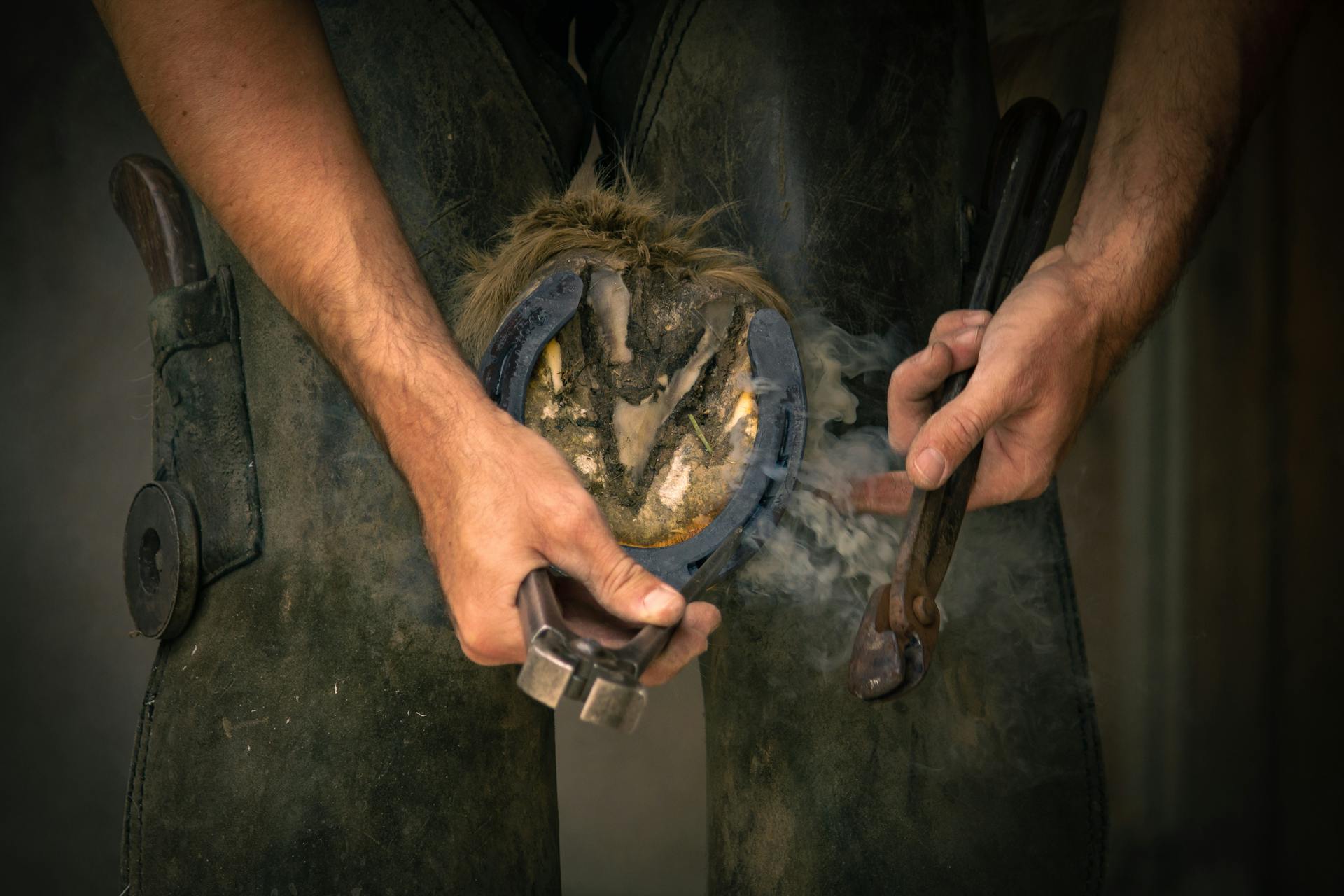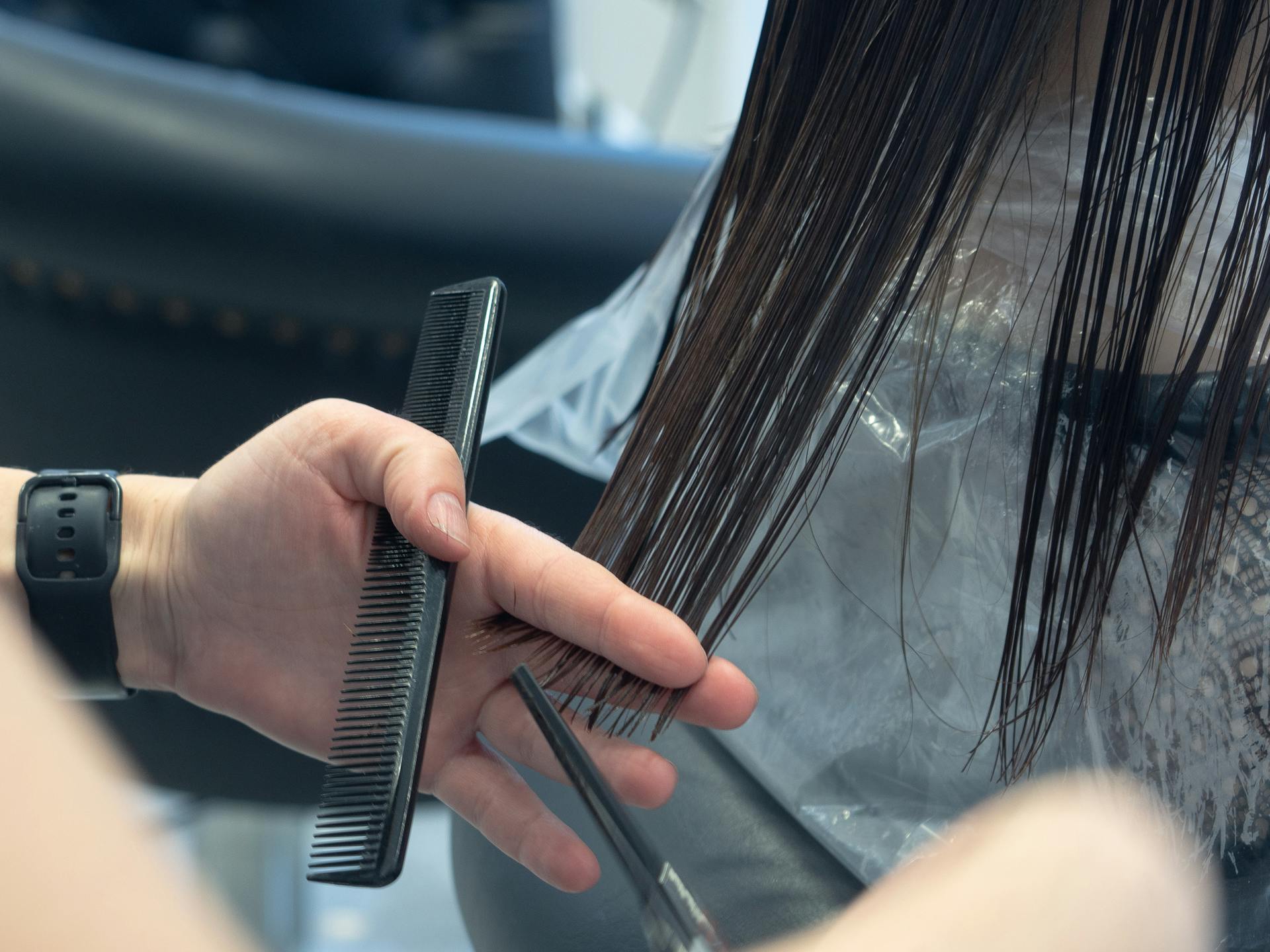
Proper foot care is crucial for maintaining the health and soundness of horses. Generally, a horse’s hooves endure significant wear and tear. So, they require regular care and maintenance. Neglecting a horse’s hooves can lead to lameness, infections, and other issues that affect their well-being.
Experts share insights on best practices for horse foot care, which include:
If this caught your attention, see: Horse Hooves
1. Understand The Basics Of Hoof Health
Before you read any guide to why horses wear shoes, it’s essential to understand the basics of hoof health. A horse’s hoof is a complex structure, comprising several layers and tissues. It’s vital to recognize signs of healthy hooves.
Typically, they should be firm yet somewhat elastic, free from cracks, and have a smooth frog (the soft, V-shaped part on the underside). Regular check-ups are crucial. During these, you’ll want to look for any abnormalities or changes in appearance.
2. Choose The Right Footwear For Your Horse
Selecting the right footwear for your horse is critical and should cater to their specific needs. When buying pinch boots or other horse shoes, consider the following:
- Activity Level: Horses engaged in heavy work or competitive sports may need more robust shoes for protection and performance. Lighter activities might only require basic shoes or even a barefoot approach. - Hoof Condition: Horses with issues like flat feet or chronic lameness may need specialized shoes. A farrier can create footwear providing extra support or cushioning as needed. - Terrain: The type of ground your horse frequently encounters is essential. Rocky, uneven terrain necessitates sturdy shoes to prevent hoof damage, while softer, wetter grounds might require shoes with better grip and moisture resistance.
Working with a skilled farrier is essential to ensure your horse receives the best footwear, whether it’s traditional metal shoes, boots, or barefoot trimming methods. The right choice can prevent injuries, enhance comfort, and improve performance.
Additional reading: Essential Oils
3. Regular Hoof Trimming
Hoof trimming is more than a routine task; it’s a critical component of horse care. Overgrown hooves can cause discomfort and structural damage. Experts suggest a trimming schedule every six to eight weeks, though this may vary based on activity level and hoof growth rate. Farriers are key in maintaining proper hoof shape and balance.
4. The Role Of Nutrition In Hoof Health
Nutrition significantly affects the quality of your horse’s hooves. Essential nutrients for healthy hoof growth include biotin, zinc, copper, and omega fatty acids. However, the overall dietary balance is just as important.
A comprehensive diet supports not only the hooves but also the overall health of the horse. Consult a veterinarian or equine nutritionist to develop a diet that meets all nutritional needs, including those critical for hoof health.
Recommended read: Dog Health Care
5. Deal With Wet Conditions
Wet environments pose a challenge to hoof health. Constant exposure to moisture can soften hooves, making them prone to damage and disease. To counter this, provide a dry, clean environment for your horse as much as possible. If you’re in a particularly wet area, consider using hoof sealants and conditioners as recommended by your farrier.
6. Managing Dry Conditions
Similarly, extremely dry conditions can lead to hard, brittle hooves, increasing the risk of cracks and chips. In such environments, using hoof moisturizers to maintain elasticity and providing access to softer ground can help prevent these issues. Regular hydration and a balanced diet remain essential for optimal hoof health in dry conditions.
7. Address Common Hoof Problems
Even with the best care, hoof problems can arise. Common issues include cracks, abscesses, and laminitis (inflammation of the hoof). Recognizing these early and seeking prompt treatment is key. For instance, hoof cracks might require special shoes or trimming techniques, while abscesses often need veterinary attention.
8. Exercise Your Horse Regularly
When taking care of horses, regular exercise is vital. It promotes circulation, which is essential for hoof growth and repair. However, balance is key. Here’s what to keep in mind:
- Varied Routines: Mix activities like walking, trotting, and occasional sprints for balanced hoof engagement. - Surface Awareness: Exercise on different terrains, but avoid excessively hard or rocky ground to prevent hoof damage. - Consistency: Regular, consistent exercise is better than sporadic, intense workouts for maintaining steady hoof growth.
By following these guidelines, you can ensure your horse’s exercise regimen supports healthy hoof maintenance.
9. Monitor Changes In Gait And Posture
Changes in how your horse walks or stands can be early signs of foot discomfort or disease. Pay attention to any signs of limping, uneven weight distribution, or reluctance to move. These can indicate issues that need immediate attention.
Observing your horse’s movement in different settings, such as on soft ground versus hard surfaces, can provide valuable clues. Additionally, regular gait assessments by a professional can help in detecting subtle changes that might not be immediately obvious.
Conclusion
Every horse is unique, and what works for one may not work for another. Regular consultations with your veterinarian and farrier, along with a keen eye for changes in your horse’s hooves and behavior, are your best tools. With these expert insights, you’re equipped to provide the best foot care for your horse, ensuring a happy, healthy companion for years to come.
For more insights, see: Best Breed for Emotional Support Dog
Featured Images: pexels.com


